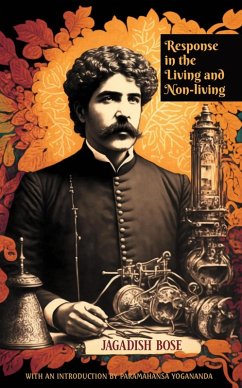This is one of the great Indian scientist's earlier works. His experiments showed that in the entire range of responses-regardless of whether the subject is metallic, plant or animal-the responses are identical. The living response, in all its diverse modifications, is a repetition of the responses seen in the inorganic. Further, the nature of the response is determined not by the play of an unknowable and arbitrary vital force, but by laws that do not change, and act equally and uniformly throughout both organic and inorganic matter. This realization was always at the core of his work. He sought to show that all materials react to their environments according to the same laws; in other words, everything exists in the same field of consciousness.
Dieser Download kann aus rechtlichen Gründen nur mit Rechnungsadresse in A, B, BG, CY, CZ, D, DK, EW, E, FIN, F, GR, HR, H, IRL, I, LT, L, LR, M, NL, PL, P, R, S, SLO, SK ausgeliefert werden.


